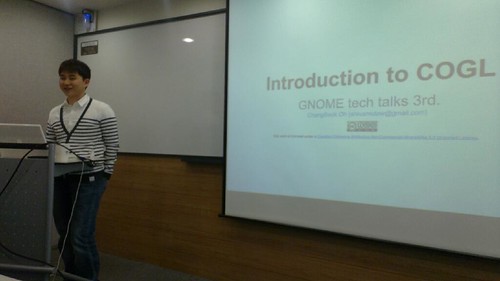GNOME Asia Summit 2013 was held in Seoul on May 23rd and 24th.
Many passionate GNOME folks came to Seoul from China, Canada, Taiwan, Japan, Hong Kong, Indonesia, USA, France, UK, Germany, India, and more.
The local team and the GNOME Asia Summit committee have been very busy preparing for the conference for the last 6 months. Fortunately, the Korean government agency(NIPA) offered the use of the venue and supported expenses by using other sponsors. I’d like to thank them for all their help.
GNOME Asia Summit was great. There were great talks and trainings about various areas. Karen and Allan both gave keynote speeches: Karen talked about security risks in medical devices that run proprietary software. I was sorry to hear that she has been fighting against the company and the FDA for people who have an implanted device including her, so I hope that this problem would be solved in the future. Allan introduced GNOME 3.8 to us which helped me to understand the new features of GNOME 3.8.
There were introductions to Linux distributions based on GNOME: one is EzGO and the other is BankOn.
Ericsun introduced EzGo which is based on GNOME3 and was developed in Taiwan. This is for a lightweight and fast desktop environment for low cost hardware. Currently, universities, user groups, and the Taiwanese government contribute to this project.
BankOn is also a local Linux distribution used in Indonesia. Mohammad introduced BankOn and Manokwari, the HTML5 based desktop shell running on BankOn. Actually, I was surprised that there are local Linux distributions in Asia. Korean companies also developed local Linux distributions almost 10 years ago, but they abandoned the distribution business because they didn’t find any business model to follow. I think that a more localized Linux distribution is required to spread Linux in Korea.
In addition, it was great to meet other Asians who have tried to spread F/OSS and GNOME. As you know, F/OSS participation is not strong in this part of the world and there are not many of Linux users in Asia, so through gatherings such as the GNOME Asia Summit, we will be able to share our issues and work together in order to improve our situation.

In particular, I was glad to see many students who attended Sunjin‘s training session in order to learn GObject/Glib. Everyone received the certificate of training signed by our executive director, Karen. I hope that GNOME Korea will continue to train more students in order to get them involved in F/OSS and GNOME.

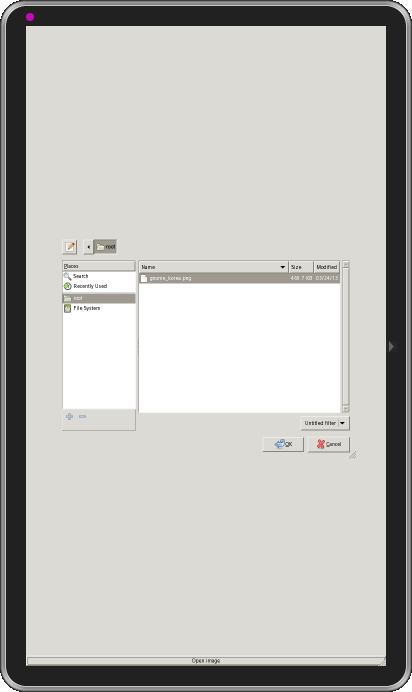
I had the opportunity to give a talk about GNOME development on Tizen Mobile: I talked why Tizen is important for GNOME mobile and how we can develop GNOME applications with Tizen SDK. I tried to show that it is easy to run GNOME on Tizen Mobile by creating Gtk+ packages for Tizen 2.0 and demonstrated how to run Gtk+ on Tizen mobile, although it is not optimized for mobile phones. You can download all packages here.
There was a city tour as usual on the next day of the conference. The local team and tour attendees went to Seoul Tower and Namsangol Hanok Village. They learned Taekwondo and had lunch together. You may find more photos on Google+ and Flickr.
I’d like to give thanks to Intel Open Source Technology Center for sponsoring my attendance. In addition, my colleagues helped me to create the Gtk+ RPM packages and gave me good advice for my talk.
Finally, without the local team, speakers, and attendees, the GNOME Asia Summit could not happen in Seoul, Korea, so I’d like to thank them all.



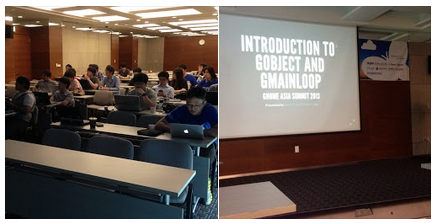
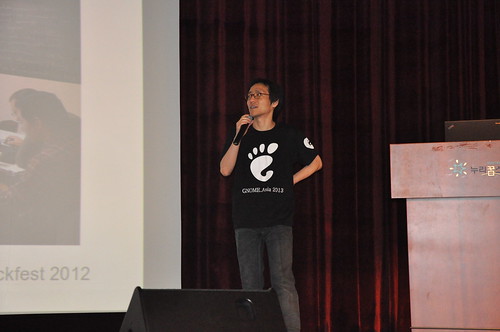
 Jaegyun introduced how to make a plug-in using GTypeModule with a sample code. He showed that it is easy to add a plug-in system into GNOME applications using the GTypeModule. You can find the material from his presentation and the example code with the links below:
Jaegyun introduced how to make a plug-in using GTypeModule with a sample code. He showed that it is easy to add a plug-in system into GNOME applications using the GTypeModule. You can find the material from his presentation and the example code with the links below: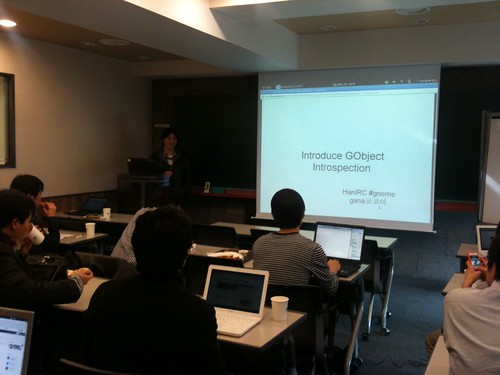
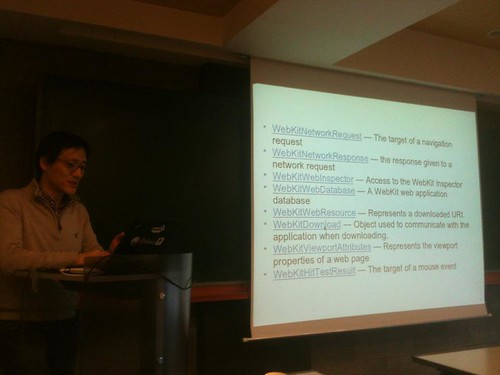 I talked about the WebKitGtk+ project and how to use it, with some examples. You can find the material and examples with the links below.
I talked about the WebKitGtk+ project and how to use it, with some examples. You can find the material and examples with the links below.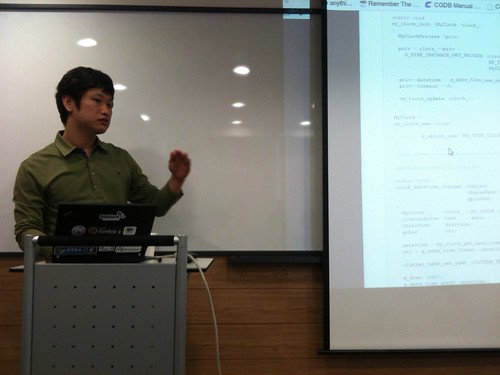 Since his talk, he has posted
Since his talk, he has posted  He has used Linux for playing movies since the early days of Linux, so he has fixed some bugs in GStreamer and open source multimedia players. In terms of those experiences, he was able to explain the Linux multimedia stack, and multimedia framework and applications chronologically. You can find the complete history of Linux multimedia with the link below.
He has used Linux for playing movies since the early days of Linux, so he has fixed some bugs in GStreamer and open source multimedia players. In terms of those experiences, he was able to explain the Linux multimedia stack, and multimedia framework and applications chronologically. You can find the complete history of Linux multimedia with the link below. In his talk, he introduced his Hangul-related projects such as the
In his talk, he introduced his Hangul-related projects such as the 
